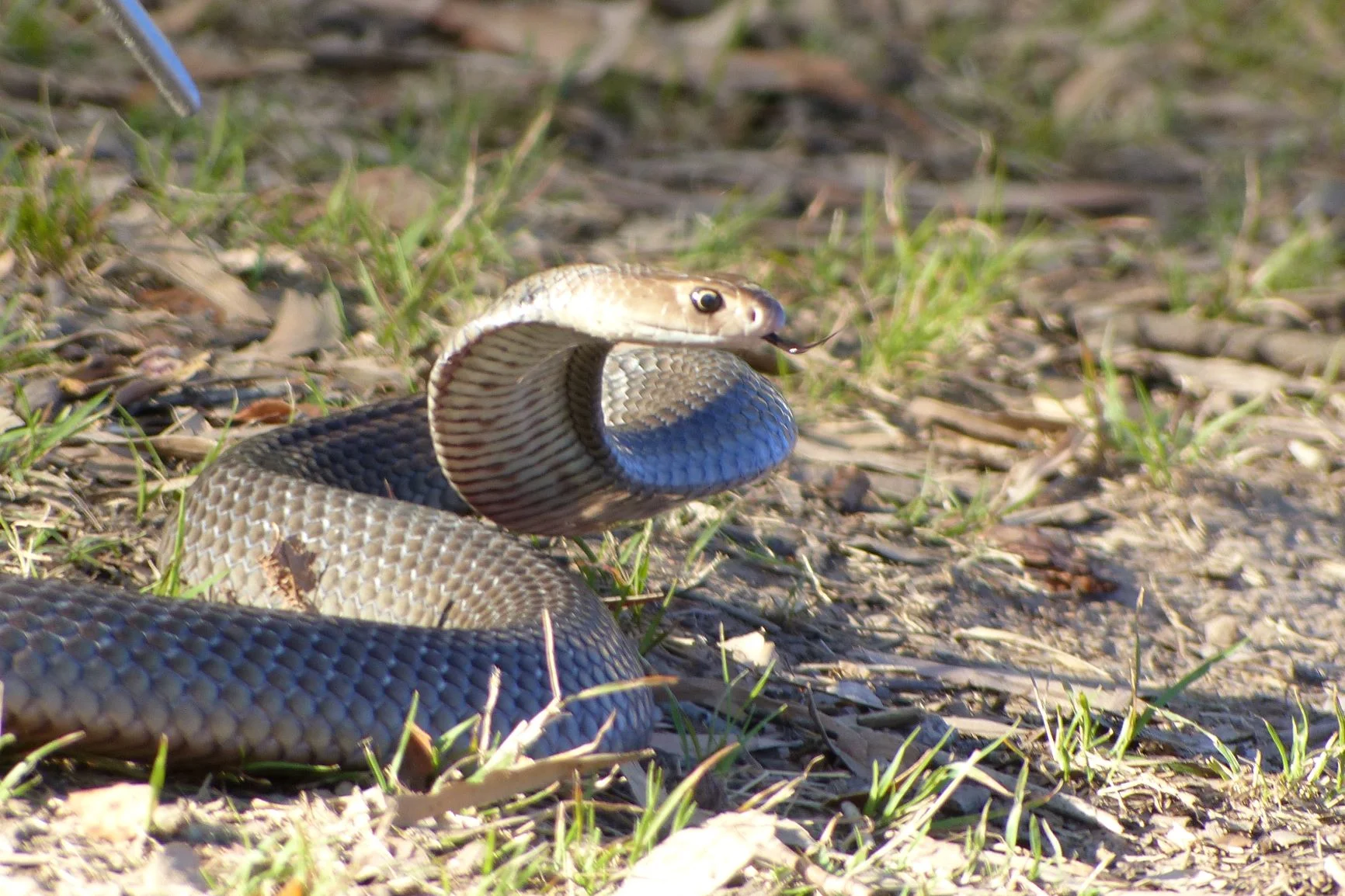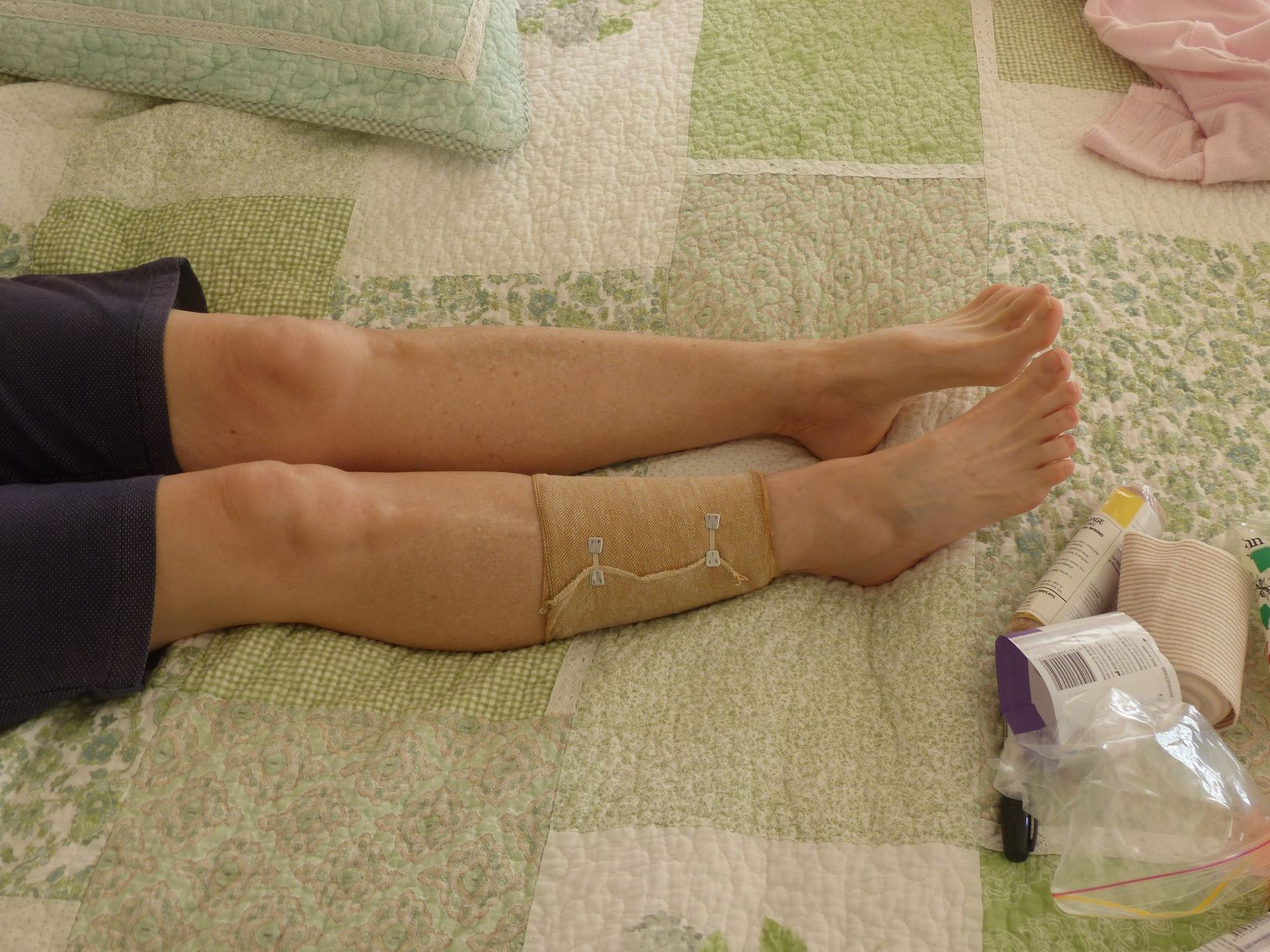First Aid for people describes common snakebite symptoms, first aid treatment as recommended by St John Ambulance Australia and the Australian Resuscitation Council, and background information relating to snakebite first aid.
When to Apply First Aid
The most dangerous snake is the one that just bit you. Unless you know the snake was harmless, treat all snakebites as if venom has been injected.
Apply first aid (see below) and call 000.
Children claiming to have been bitten must be taken seriously. An eastern brown snakebite can appear as a scratch and have no pain or swelling at the bite site.
snakebite first aid
The first responder should carry out the following protocol as recommended by the Australian Resuscitation Council:
DRSABCD Danger – Response – Send for help – Airway – Breathing – CPR – Defibrillation.
Lie the patient down and remove all jewelry. It is important that the patient remains calm and still.
if bitten on a limb
Apply Pressure Bandage Immobilisation (PBI) to the affected limb.
There are two aspects to PBI:
The pressure bandage compresses the lymphatic system to slow venom progress to a lymph node and hence into the blood system;
Immobilisation inhibits muscle movement which would otherwise assist the progress of venom through the lymphatic system.
Apply a wide bandage firmly over the bite site.
Starting at the fingers or toes, apply a second pressure bandage around the limb, working upwards as high as possible (over clothing is fine). The bandage should be tight enough to barely allow a fingertip to slightly raise the edge, but not so tight as to affect circulation. The bandage may remain on for hours.
To assist hospital staff, mark the bandage with a pen over the bite site with a cross and the time of the bite.
To help immobilise the limb, apply a splint that will keep the limb stationary.
if bitten on the head or torso
Apply a pressure bandage over the bite site.
Keep the victim calm and limit movement.
Stay with the patient until medical help arrives. Keeping the patient calm and still is crucial.
Quick application of a PBI will delay the progress of the venom and hence the onset of more serious symptoms. If the victim does collapse or experience breathing difficulties, recommence DRSABCD. Victims of eastern brown snake envenomation who experienced heart attacks prior to reaching hospital were saved by quick application of CPR.
Note: Some snake toxins result in miniature blood clots forming and may predispose the victim to severe hemorrhage from vigorous chest compressions. Caution should be exercised if applying CPR by maintaining a stringently smooth technique.
Some Important Do Nots
Do not wait to see if the victim starts displaying symptoms before seeking help. Snakebite first aid is all about delaying the progress of the venom through the lymphatic system and seeking immediate help, not waiting until symptoms appear before acting.
Do not allow the victim to walk, run or move unless absolutely necessary. Waiting for an ambulance is far more effective than walking or running to a car to drive to hospital.
Do not apply a tourniquet.
Do not interfere with the bite site, including sucking or cutting the wound.
Do not apply ice or cold packs (this can induce severe tissue damage).
Do not apply electric shocks.
Do not give the victim food, alcohol or drugs (including pain killers, herbal remedies and non-steroidal anti-inflammatory drugs). Small sips of water are OK.
Do not attempt to capture or kill the snake. First responders are often bitten while attempting to capture the snake, adding to the problem rather than helping. Hospital testing will determine the snake venom.
The Good News
90-95% of people bitten by a snake were interacting with it at the time (professional snake catchers, owners of captive snakes, or members of the public trying to catch or kill a snake). If you leave the snake alone it will leave you alone.
On average, only 2-3 people die as a result of a snakebite in Australia each year (putting this into context, far less than those dying from bee sting complications or horse related injuries).
Australia’s dangerous snakes have relatively small fangs. Eastern brown fangs are only 2 millimeters long. Consequently, venom is almost always injected into the lymphatic system just below the skin (rather than directly into the blood system). The venom travels through the lymphatic system to a major lymph node and then into the blood system. Progress of the venom can be slowed in the lymphatic system by correct application of first aid.
Australian hospitals are well equipped to handle snakebite victims.
Antivenom
Antivenoms have been developed in Australia for the death adder, black snake, brown snake, taipan, tiger snake, and sea snake. A particular antivenom will be effective across a range of similar snake species. For example, tiger snake antivenom will be used to treat bites from tiger snakes, rough-scaled snakes, broad-headed snakes, red bellied black snakes, blue bellied black snakes and spotted black snakes. Polyvalent is an antivenom containing units of death adder, black snake, brown snake, taipan and tiger snake antivenoms. Polyvalent is used if the identity of the snake is unknown. As side effects from antivenom can include an anaphylactic reaction, targeted antivenom is preferable to polyvalent.
The Snake Venom Detection Kit (SVDK) was developed in 1979 to determine if venom was injected and the species of snake responsible. Today, a range of laboratory tests are used with the SVDK providing confirmatory information only.
bandages
As noted before, elasticised bandages are used to apply compression to the bite site and up the entire limb in order to slow transfer of venom through the lymphatic system. There are snake bite bandages available with a printed band down the centre. When the bandage is stretched to the correct tension, the printed rectangles are stretched into squares. These bandages can be bought from most chemists for under $15. If you are a bush walker, having at least one elasticised bandage with you may save a life.








